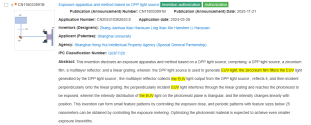With the combination of increase cpu speed/cores evolved binary translation emulator, and support for modern graphix card, the current line of Loongson processor has finally reached the ability to run modern games including Black Myth at playable framerates (> 25).
3B6000
3C6000
*The Witcher 3*, *Skyrim*, *Fallout 4*, *Ryza 2*, *Detroit: Become Human*, *Titanfall 2*, *Final Fantasy VII Remake*, *Call of Duty: Modern Warfare 2 Remastered*, *Call of Duty: Modern Warfare 1 Remastered*, *Genshin Impact*, *Euro Truck Simulator 2*, *Baldur's Gate 3*. Box64: *Dark Souls 1 Remastered*, *Dark Souls 2*, *Dark Souls 3*, *Sekiro: Shadows Die Twice*. The resources used for *The Old Man's Ring* and *Resident Evil 3*
3B6000
3C6000
*The Witcher 3*, *Skyrim*, *Fallout 4*, *Ryza 2*, *Detroit: Become Human*, *Titanfall 2*, *Final Fantasy VII Remake*, *Call of Duty: Modern Warfare 2 Remastered*, *Call of Duty: Modern Warfare 1 Remastered*, *Genshin Impact*, *Euro Truck Simulator 2*, *Baldur's Gate 3*. Box64: *Dark Souls 1 Remastered*, *Dark Souls 2*, *Dark Souls 3*, *Sekiro: Shadows Die Twice*. The resources used for *The Old Man's Ring* and *Resident Evil 3*




